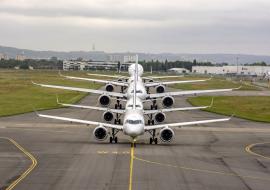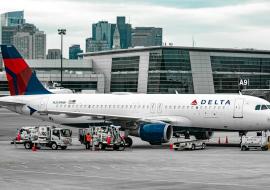FAA Orders 10% Cut in U.S. Air Traffic Starting November 7

The Federal Aviation Administration (FAA) ordered a mandatory 10% reduction in flight capacity across 40 high-demand markets in the United States, effective Friday, November 7, 2025, citing staffing shortages caused by the ongoing federal government shutdown. The FAA, supported by the Department of Transportation (DOT), said the measure is necessary to preserve operational safety as thousands of aviation employees — including air traffic controllers — continue working without pay.
Industry analysts estimate that the cut could result in as many as 1,800 canceled flights per day and eliminate approximately 268,000 available seats daily on routes affected by the measure. Airlines have been notified that the reduction will be implemented gradually until the full 10% cap is reached. A final list of the affected airports will be released once coordination with carriers is completed, but the FAA has already warned that it will include the busiest hubs in the country.
The decision stems from concerns over the erosion of safety margins. More than 13,000 air traffic controllers and tens of thousands of airport security agents have been working unpaid since the shutdown began. The lack of compensation has triggered sick-leave spikes, personnel shortages, and the inability to schedule adequate reserve staffing, all of which reduce redundancy in a system that relies heavily on precision and fatigue-management.

For the travel and tourism sector, the consequences are immediate. Airlines face lost revenue from unsold seats, higher operational costs, and disruptions with long-term repercussions. According to the U.S. Travel Association, the flight restrictions will generate significant uncertainty during what is normally one of the most profitable periods of the year. Executives warn that continued instability could damage both traveler confidence and the economic performance of destinations counting on holiday-season demand.
Beyond cancellations, experts warn of systemwide ripple effects, including chronic delays, diversions to airports not included in the capacity reduction, and rising airfare prices on alternative routes. Airlines are preparing for a surge in customer-service requests as travelers struggle with itinerary changes. Passengers are advised to check flight status directly with their carrier, build flexibility into hotel and transportation plans, and consider purchasing travel insurance as a precaution.
Politically, the move increases pressure on Congress to end the budget standoff. While the FAA insists the capacity cuts are a safety requirement, travel industry leaders argue the measure highlights the economic cost of maintaining a prolonged shutdown. Some officials have suggested that deeper restrictions could follow if the government does not restore funding soon.
In the meantime, both the FAA and carriers urge travelers to monitor updates through official channels, emphasizing transparency and safety as the top priorities. The aviation sector, already strained by demand peaks, now faces a new challenge: maintaining reliability with limited capacity and critical personnel working without pay until a political agreement is reached.














